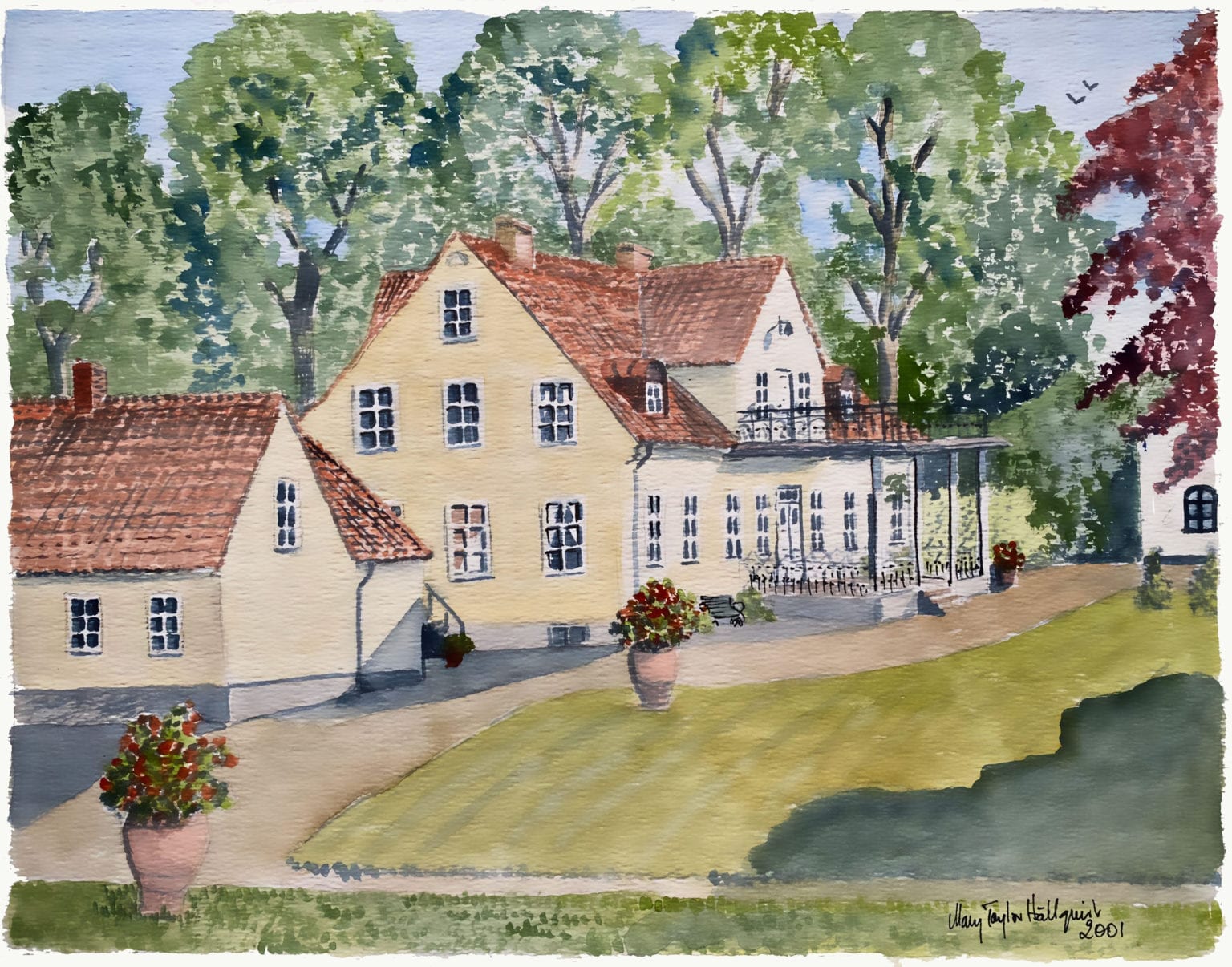Borrby Kungsgård history
The oldest thing we know about Borrby Kungsgård is that in the 1400-1500s it was called Borrby Hovgård. The then owner of the estate was the Archbishop of Lund. The task of the farm was to raise money for the Archbishop and to keep the parish people under watch. The Archbishop could also live on the farm when visiting the area.
The first to live on the farm named by name was Hendrik von Lunneborg and was a nobleman from Germany. He became the Borrby peasants' tormentor. Hendrik levied too high taxes and got bribed with illegal oats deliveries. He lost the estate after he shot a farmer in the district negotiations where he was charged with various crimes. Hendrik received royal grace for his crime probably because he was of noble burden.
After the Reformation, the estate was attacked by the Danish King Cristian on IV. The farm was managed by the military Jörgen Hondroff, who also owned Rönningholm, through marriage. He was a commander in Järrestad here, but lived mostly at Rönningholm and died in 1640.
A new German nobleman appeared by the name of Joackim Grubber. During Grubber's time the farm was burnt down in 1644 by the Swedes. Grubber was a naval soldier, Admiral and participated in the war against the Swedes, but never signed the sovereignty act in 1661 with Sweden. Nils Lafturios wrote for Borrby.
The farm thus came into Swedish ownership as Bornholmskt Compensation estate and became the Ryttmästarboställe at Södra Skånska Cavalry. Karl the XI made Borrby Gård a Kungsgård. The king then had the opportunity to visit the farm and live with safe friends. Karl the XI is said to have been at Borrby Kungsgård 1/8 1690. By Kungsgård you mean older property, belonging to the Crown, formerly the king's estate or residence for royal trustee. Nowadays usually managed by the Domain Administration.
In 1680 the snapphans had a fort at Simrishamn and the peasants in Borrby were very poor at this time, as the tax burden was too heavy.
In 1684 Cristian Riddersköld, who was a personal friend of the King, came to Kungsgården. Knights shield was a valiant warrior and had been involved in the battle of Lund, Halmstad and Landskrona.
In 1711, Riding Master Nils Ratzvill lived at Kungsgården. He was born in Vänersborg but had Hungarian blood in him. As a young man he had spent much time at the Lüneburg Courts. In 1723 Ratzvill was moved from Borrbygård.
His successor was Gustav von Schlippenbach in 1724 and he was a genuine old Caroline who had been in Russian captivity for 15 years. His title was lieutenant lieutenant on the Southern Skåne regiment on horseback with rider master division at Borrby Squadron. He was a very capable warrior and negotiator. He also negotiated with Borrby Byamän to use the grasshopper east and west of Kungsgården. The homeowner to whom the villagers were entitled and for that he had to pay two barrels of beer and 3 pots of liquor. Schlippenbach received his resignation in 1733 and moved to Sölvesborg where he died 10 years later.
New Officer 1733 under the low roof of Borrbygården, became Henrik Johan Wolffelt. It was no longer a comfortable residence, they passed their riders at the Southern Skåne cavalry. It was still the same building as in Christian Riddersköld's time (late 16th century). Wolffelt had been involved in many adventures, for example in the battalion at Gadebusch 1712, had been captured "under the crown of Denmark" in Tönningen 1713, but escaped, and he had fought at King Carl's side at Fredrikshall 1718. Henrik's name is also mentioned in 1742 in Borrby Church book with his wife Countess Virginja Kruuse. A few years later he resigned and moved to Espinge, where he, as Lieutenant Lieutenant, ended his days in 1763.
In 1748 the equestrian order passed and with that residence to Kjell Christoffer Bennet He was the first officer at Kungsgården who did not smell blood. He had been a courtier in his youth and must have wrinkled his nose when he saw Borrbygård's rickety buildings. He wanted a more permanent home and there was immediately talk of a new building. The new construction was completed in 1751 and was 28 1/2 cubits long and 16 cubits wide. The walls were plastered and yellow, except for the corners, which are white as well as cornices on both sides. The same design that was seen up to 1923, when it was partially rebuilt. There were two houses one larger for the Officers and one smaller for the staff.
It does not appear that Bennet ever moved into his newly built house when he passed out a year later. Daniel Bernard Gyllenram was the replacement. He was married to Freemason Vilhelmina von Nolcken, who was known for being a piece. The officers were known to have ancestral eggs at the resort, however, the Freemason fired a gun so that Gyllenram lost hearing on one ear. One led to the other and finally they were legally separated.
The next was Major Holger Anders Rosencrantz, who had an excellent victory in the Pomeranian War, where he was badly injured in the right shoulder. He died in 1783 at Lillö Kungsgård near Kristianstad, but is buried in Vallby church in the family burial grounds.
His wife, Eleonore Stjernstedt, remarried to the Swedish National Council Johan Liljencrantz, who



